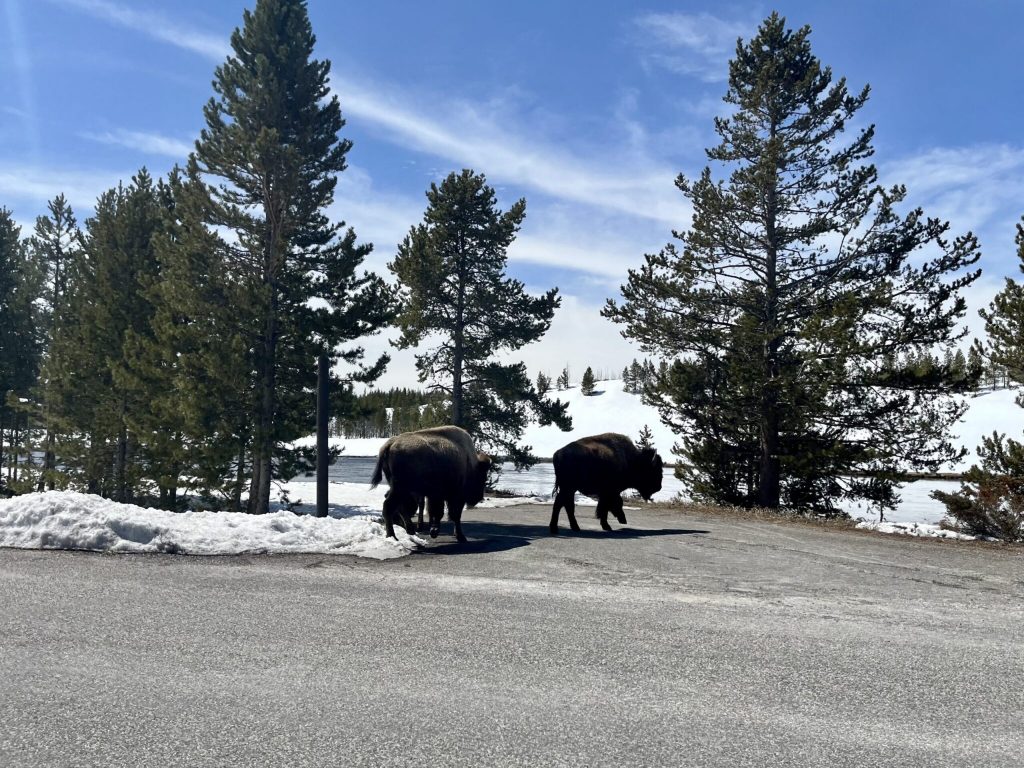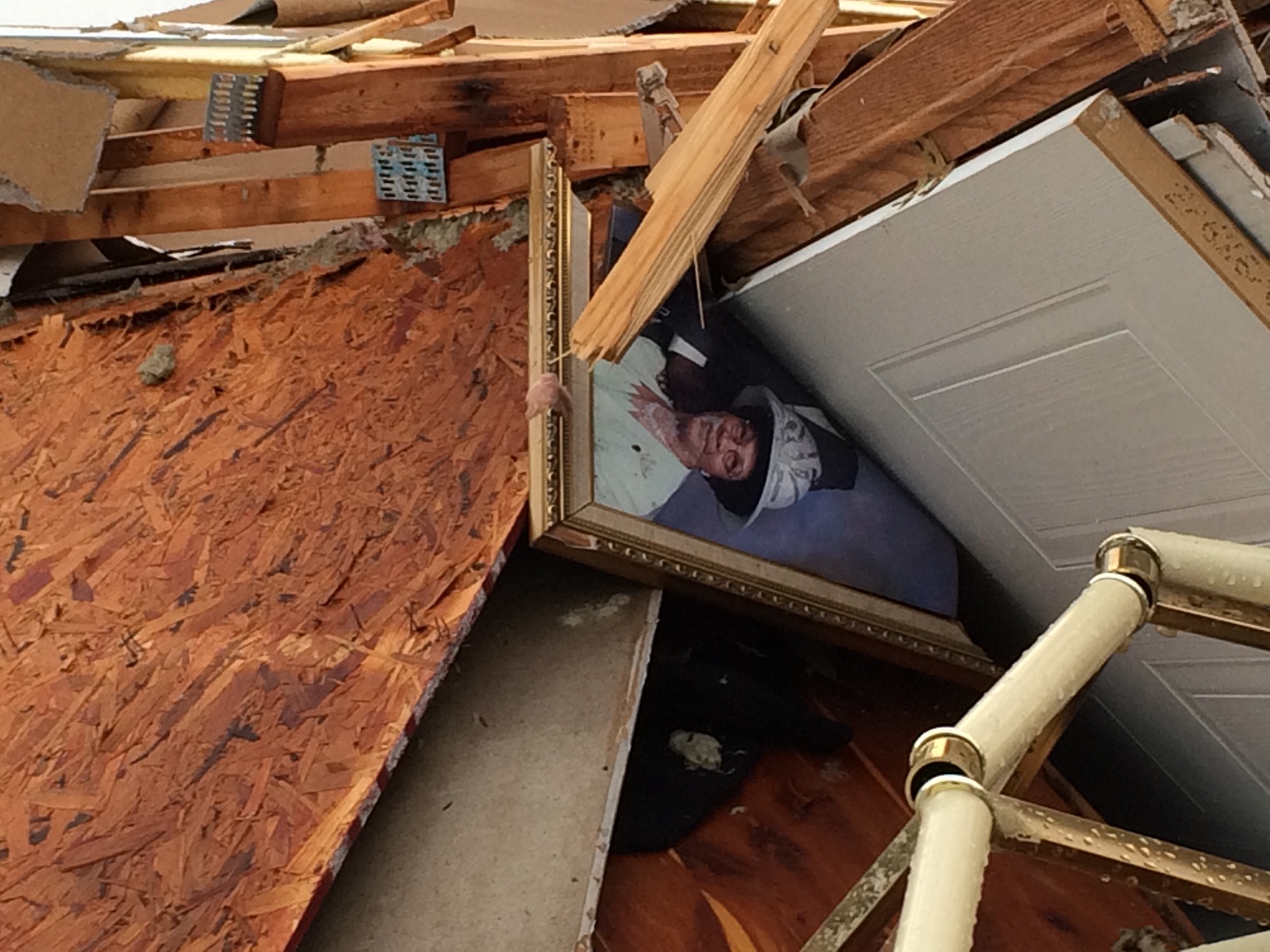How a looming government shutdown could hit national parks

A group of bison cross the road in Yellowstone National Park near the Madison River in April 2023. Clark Corbin/Idaho Capital Sun
National parks and nearby communities could forego millions of dollars per day during a partial government shutdown that could start this weekend.
Would-be visitors will likely see restrictions on park access, though the extent of those restrictions was still unclear just days before a potential lapse in federal appropriations set to begin Sunday. Parks would lack the regular funds used for daily operations, but some could be covered temporarily by states or other funding sources.
The National Park Service furloughed about seven out of every eight workers during shutdowns in October 2013 and December 2018-January 2019, according to a report last week from the Congressional Research Service.
But the Interior Department took different approaches to visitor access in each shutdown under presidents of different parties.
In 2013, under Democratic President Barack Obama, parks were closed to the extent possible, and visitors asked to leave. Concessionaires inside parks closed and park roads, where possible, were blocked.
In 2018 and 2019, under Republican Donald Trump, most parks remained at least partially open with services reduced. In part, that approach relied on visitor fees, which was legally dubious. It also left visitors without access to even basic services like restrooms and trash removal.
That move also left parks severely understaffed and irresponsibly put visitor health and safety — and the wellbeing of the parks themselves — at risk, said John Garder, senior director for budget and appropriations at the advocacy group National Parks Conservation Association.
“The decision of the last administration to keep parks open using fees was reckless,” Garder said.
The parks had limited resources to educate visitors, he said. Some used sensitive areas of Joshua Tree National Park for camping, damaging the park’s delicate namesake flora, he said.
No shutdown plan online
But the Interior Department has not updated its plan of action in the event of a shutdown as a funding lapse approaches.
The 2019 plan has been removed from a White House Office of Management and Budget web page listing all current agency and department shutdown plans but had not been replaced by Tuesday afternoon.
“When the Department has final lapse plans, they will be published,” Interior spokesperson Melissa Schwartz wrote in a Monday email. Department spokespeople declined further comment.
NPS parkways, such as the Blue Ridge Parkway in North Carolina and Virginia, would likely stay open because of the difficulty in closing them.
Government funding is set to lapse Oct. 1. The U.S. House Republican Conference, which controls that chamber, has shown little progress in resolving internal disputes about whether and how to reduce federal spending, leaving negotiations over regular spending bills as well as a short-term stop-gap measure to keep the government open at a standstill.
Lost revenue and research
If park access is severely restricted, every day of a shutdown next month could result in 1 million fewer visitors to national parks, Garder said.
Visitors seeking to enter many parks — including those on long-planned trips or celebrating weddings and other special events — would likely be turned away, Garder said.
It would also mean a roughly $70 million per day loss for so-called gateway communities outside park boundaries whose economies largely depend on tourism, according to the NPCA.
“It’s deeply disappointing for visitors, but it’s alarming and disheartening for those who worry about their bottom lines, and for park employees, whose morale is deeply affected,” Garder said.
The 16-day 2013 shutdown saw a loss of nearly 8 million visitors and $414 million in economic activity, according to a 2014 NPS report cited by the Congressional Research Service.
A government funding lapse could also threaten long-term scientific research and park assets.
For example, a 60-year study of wolves and moose on Isle Royale, an island park 15 miles from Minnesota in Lake Superior, was interrupted by the 2018-2019 shutdown.
And the damage to the desert-dwelling Joshua trees from campers also showed the potential long-term harm to parks, said Lisa Frank, the executive director of the federal legislative office for the advocacy group Environment America.
“These trees grow very, very slowly,” she said. “They’re in a really harsh environment, that it’s totally a miracle that they grow at all in that part of the world. And so damage to some of those trees, when they’re already suffering from climate change and everything else, is a pretty severe problem.”
Senate Republican calls for parks to stay open
U.S. Sen. John Barrasso, a Wyoming Republican and ranking member of the Senate Energy and Natural Resources Committee that has jurisdiction over the Park Service, wrote to Interior Secretary Deb Haaland last week asking to use visitor fees to cover operational costs during a shutdown.
The NPS used fees collected under the Federal Lands Recreation Enhancement Act to keep parks open to visitors during the last shutdown and could do so again, he said.
“Your judicious use of FLREA fees will protect the millions of people who plan and save for trips to these special places, ensure that gateway communities that rely on park visitation for jobs and economic stabilities do not needless suffer, and sustain the dedicate National Park Service employees who rely on a regular paycheck,” Barrasso wrote.
But the Trump administration’s use of those funds was illegal, the Government Accountability Office found, as those fees were supposed to be used for other purposes.
State funding?
In previous shutdowns, states have signed memoranda of understanding with the federal government to allow state funds to cover park costs and keep them open, Garder said.
In Arizona, Gov. Katie Hobbs, a Democrat, said last week she would sign an executive order to use state lottery revenue to keep Grand Canyon National Park open during a shutdown, according to The Associated Press. Republican Gov. Doug Ducey spent about $200,000 to keep that park open in 2019.
While on sounder legal footing than using entrance fees, Garder said state partnerships do not excuse federal lawmakers from passing a spending law.
“It’s certainly not a long-term solution,” he said.
The post How a looming government shutdown could hit national parks appeared first on Georgia Recorder.



